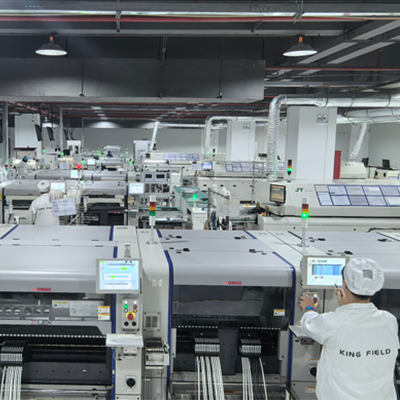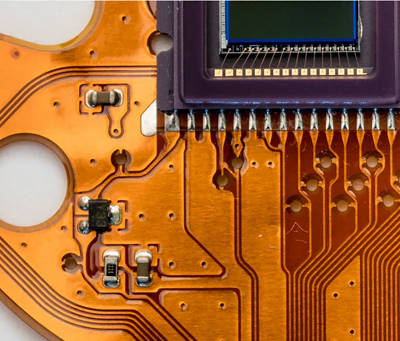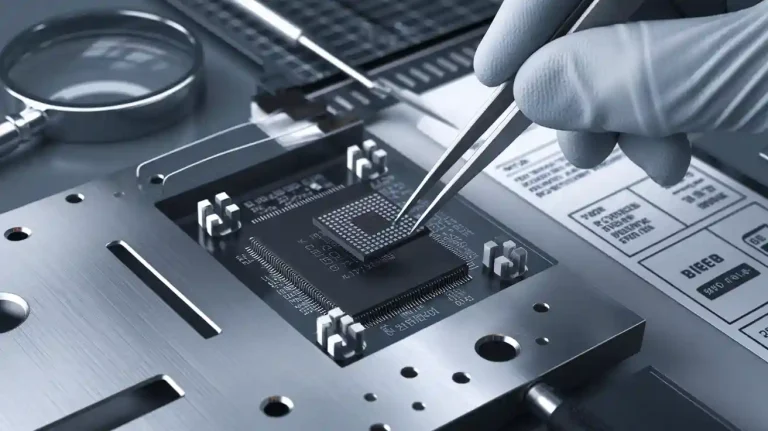Pick and Place in SMT Made Simple
Surface Mount Technology (SMT) relies on advanced automation to meet the demands of modern electronics manufacturing. Among these systems, pick and place in SMT plays a vital role by placing components onto printed circuit boards (PCBs) with exceptional precision. These machines streamline production processes and minimize errors, ensuring consistent quality in high-volume manufacturing.
- Technological advances in SMT equipment, such as automated pick-and-place systems, have significantly boosted manufacturing efficiency.
- High-speed production lines reduce human error while maintaining accuracy.
- Integration of AI and machine learning enhances defect detection and optimizes performance.
These innovations highlight the transformative impact of SMT pick and place machines on the electronics industry.
Key Takeaways
- SMT pick and place machines help put parts on PCBs fast.
- These machines lower mistakes and place thousands of parts each hour.
- They use cameras to check part placement and find problems quickly.
- This technology is key for making car, medical, and tech devices.
- Pick and place machines can handle both small and big jobs easily.
Understanding Pick and Place in SMT
What Are SMT Pick and Place Machines?
SMT pick and place machines are automated systems designed to precisely position electronic components onto printed circuit boards (PCBs). These machines play a critical role in Surface Mount Technology (SMT) assembly, where components are mounted directly onto the surface of PCBs. By automating the placement process, they eliminate the need for manual intervention, ensuring consistent accuracy and efficiency.
Modern pick and place machines use advanced robotics and software to handle components of varying sizes and shapes. They are equipped with feeders that supply components, robotic arms that pick them up, and placement heads that position them on the PCB. These machines are essential for high-volume production lines, where speed and precision are paramount.
Tip: SMT pick and place machines are ideal for manufacturing compact and complex electronic devices, such as smartphones and medical equipment.
Key Components of Pick and Place Machines
Pick and place machines consist of several key components that work together to achieve precise component placement:
- Feeder System: Supplies components to the machine in an organized manner. Common feeder types include tape feeders, tray feeders, and tube feeders.
- Robotic Arm: Picks up components from the feeder and transfers them to the placement head.
- Placement Head: Positions components on the PCB with high accuracy. Some machines feature multiple placement heads for faster operation.
- Vision System: Ensures precision by identifying component orientation and verifying alignment during placement.
- Control Software: Manages the machine’s operations, including component selection, placement sequence, and error detection.
These components work in harmony to streamline the assembly process, reducing errors and increasing production speed.
How They Differ from Manual Assembly
Pick and place in SMT differs significantly from manual assembly in terms of speed, accuracy, and scalability. Manual assembly relies on human operators to place components on PCBs, which can lead to inconsistencies and errors. In contrast, automated pick and place machines ensure uniformity and precision, even for complex designs.
Automated systems outperform manual assembly in high-volume production environments. They can place thousands of components per hour, whereas manual assembly is limited by human speed and endurance. Additionally, pick and place machines can handle tiny components that are difficult for humans to manipulate.
Note: While manual assembly may still be used for prototyping or small-scale production, automated pick and place machines are the preferred choice for large-scale manufacturing.
The Process of Pick and Place in SMT
Preparing the PCB and Components
The preparation stage lays the foundation for successful assembly in pick and place in SMT. It involves ensuring that both the PCB and components meet the required specifications for high-quality production. Proper preparation minimizes errors and enhances the efficiency of the entire process.
- PCB Design and Layout: The PCB must be designed with functional positioning and structural layout optimization. This ensures that it can accommodate complex functions, such as those required in medical devices, without compromising assembly quality.
- Material Selection: Using reliable materials that meet industry standards is critical. High-quality materials contribute to the stability and safety of the final product.
- Solder Paste Application: The choice and application of solder paste play a vital role. Proper solder paste selection ensures effective attachment of components to the PCB.
- Environmental Control: Maintaining a clean and controlled environment prevents contaminants from affecting the PCB’s performance. Dust or moisture can degrade the quality of the assembly.
Each of these steps ensures that the PCB and components are ready for the precision required in the pick and place process.
Component Placement and Alignment
The placement and alignment phase is where the core functionality of pick and place in SMT comes into play. This stage involves transferring components from feeders to their designated positions on the PCB with high accuracy.
- Feeder Systems: Components are supplied to the machine through feeders, which organize them for efficient pickup. Tape feeders, tray feeders, and tube feeders are commonly used.
- Robotic Arms and Placement Heads: Robotic arms pick up components and transfer them to placement heads. These heads position the components on the PCB with precision. Some machines use multiple placement heads to increase speed.
- Alignment Verification: Before placement, the machine verifies the orientation and alignment of each component. This step ensures that components are correctly positioned to avoid functional issues.
High-precision mounters used in this stage improve placement accuracy, which is essential for complex and compact designs.
Ensuring Precision with Vision Systems
Vision systems are integral to maintaining the precision required in pick and place in SMT. These systems use advanced imaging technology to monitor and adjust the placement process in real time.
- Component Identification: Vision systems identify components and verify their orientation before placement. This prevents errors caused by misaligned or incorrectly oriented parts.
- Alignment Verification: During placement, the system checks the alignment of components with the PCB layout. This ensures that each component is positioned exactly where it should be.
- Defect Detection: Automatic Optical Inspection (AOI) systems detect defects such as soldering errors or misaligned components. This step ensures that only high-quality assemblies proceed to the next stage.
By integrating vision systems, manufacturers achieve the precision needed for high-performance electronics. These systems also enhance quality control, reducing the likelihood of defects in the final product.
Benefits of Pick and Place in SMT
Speed and Efficiency in High-Volume Production
Pick and place in SMT revolutionizes high-volume production by significantly increasing speed and efficiency. These machines can place thousands of components per hour, far surpassing the capabilities of manual assembly. This rapid placement ensures that manufacturers meet tight deadlines without compromising quality. High-speed throughput also reduces production bottlenecks, allowing assembly lines to operate smoothly.
By automating repetitive tasks, pick and place machines minimize human error. This consistency ensures that every PCB meets the required specifications. Manufacturers benefit from reduced waste and lower production costs, making these machines indispensable for large-scale operations.
Precision for Complex and Compact Designs
Modern electronic devices demand intricate designs with densely packed components. Pick and place machines excel in handling these challenges. They achieve placement accuracy down to ±0.02mm, ensuring that even the smallest components are positioned correctly. This level of precision is essential for high-density circuit boards used in smartphones, medical devices, and other advanced technologies.
Vision systems integrated into these machines further enhance accuracy. They verify component orientation and alignment in real time, reducing the risk of defects. This precision enables manufacturers to produce reliable and high-performance electronics, even for the most complex designs.
Scalability for Various Manufacturing Needs
Pick and place machines offer unparalleled scalability, making them suitable for diverse manufacturing requirements. Their operational flexibility allows quick adjustments for different product types and PCB designs. This adaptability ensures that manufacturers can efficiently switch between small-scale and high-volume production.
The table below highlights key benchmarks that demonstrate the scalability of these machines:
| Benchmark Type | Description |
|---|---|
| Precision Placement | Achieves placement accuracy down to ±0.02mm, essential for high-density circuit boards. |
| High-Speed Throughput | Capable of exceeding 50,000 components per hour, significantly enhancing assembly efficiency. |
| Operational Flexibility | Designed for quick changeovers and adaptability to various product types and board designs. |
| Feeder Flexibility | Supports scalable and interchangeable feeders for different reel sizes and component shapes. |
These features make pick and place machines a versatile solution for manufacturers. Whether producing a limited batch of prototypes or scaling up for mass production, these machines deliver consistent results.
Applications of Pick and Place in SMT
Industries That Rely on SMT Pick and Place Machines
Pick and place in SMT plays a crucial role in industries that demand precision and efficiency in electronics manufacturing. The automotive industry relies on these machines to produce advanced electronic control units (ECUs) for modern vehicles. These units manage critical functions such as engine performance, safety systems, and infotainment.
The medical sector benefits from SMT pick and place machines for assembling compact devices like pacemakers and diagnostic equipment. These machines ensure the accuracy required for life-saving technologies. Consumer electronics manufacturers use them to produce smartphones, tablets, and wearable devices. Their ability to handle high-density circuit boards makes them indispensable for creating sleek and powerful gadgets.
Aerospace and defense industries also depend on SMT pick and place machines. They assemble complex systems like radar equipment and communication devices, where reliability is paramount. These industries require machines capable of handling intricate designs and maintaining consistent quality.
Examples of Products Manufactured Using SMT
SMT pick and place machines contribute to the production of a wide range of electronic products. Smartphones are among the most common examples. These devices feature densely packed components, including processors, memory chips, and sensors, all placed with precision.
Medical devices such as glucose monitors and portable ultrasound machines are manufactured using SMT. These products require compact designs and flawless functionality, which pick and place machines deliver.
In the automotive industry, SMT machines assemble components for advanced driver-assistance systems (ADAS). These systems enhance vehicle safety by enabling features like lane-keeping assistance and collision avoidance.
Wearable technology, including fitness trackers and smartwatches, also relies on SMT assembly. These devices demand lightweight and compact designs, which are achieved through automated placement processes.
Fun Fact: SMT pick and place machines are even used in the production of LED lighting systems, ensuring uniform placement of LEDs for optimal brightness and efficiency.
SMT pick and place machines have revolutionized PCB assembly by delivering unmatched speed, precision, and efficiency. Their ability to handle high-density designs and adapt to diverse manufacturing needs makes them indispensable in modern electronics production.
| Feature | Description |
|---|---|
| Precision Placement | Placement accuracy down to ±0.02mm, essential for high-density circuit boards. |
| High-Speed Throughput | Capable of exceeding 50,000 components per hour, significantly improving assembly efficiency. |
| Integrated Quality Control | Real-time monitoring of component alignment and presence, reducing defect rates. |
| Industry 4.0 Integration | Support for real-time analytics and smart-factory connectivity. |
These machines enable the creation of advanced electronics that power industries and everyday life, from smartphones to medical devices.
FAQ
What is the primary function of SMT pick and place machines?
SMT pick and place machines automate the placement of electronic components onto PCBs. They ensure precision and speed, making them essential for high-volume production and complex designs.
How do vision systems improve accuracy in SMT assembly?
Vision systems identify component orientation and verify alignment during placement. They detect defects in real time, ensuring high-quality assemblies and reducing errors.
Can pick and place machines handle different PCB designs?
Yes, these machines offer operational flexibility. They adapt to various PCB layouts and component types, making them suitable for diverse manufacturing needs.
What industries benefit most from SMT pick and place machines?
Industries like automotive, medical, consumer electronics, and aerospace rely on these machines. They produce advanced devices such as ECUs, pacemakers, smartphones, and radar systems.
Are SMT pick and place machines suitable for small-scale production?
While ideal for large-scale manufacturing, these machines also support prototyping and small-batch production. Their scalability ensures efficiency across different production volumes.























